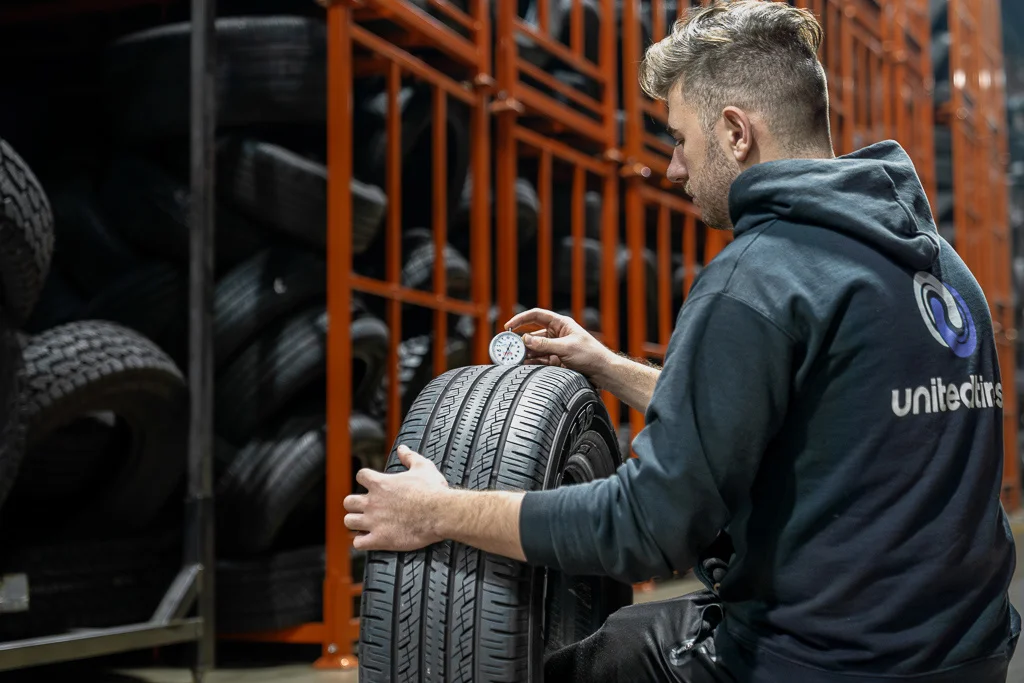
When it comes to the safety and efficiency of your vehicle, few things are as important as your tires. And your tire treads are what keep them gripping the road. So if you’re wondering ‘what is tire tread depth? the answer is it ensures you and your loved ones remain safe on the road while getting the most out of your vehicle. In this comprehensive guide, we’ll dive deep into the world of treads, including how to check tire tread depth, and how deep your tread should be.
Tire tread basics
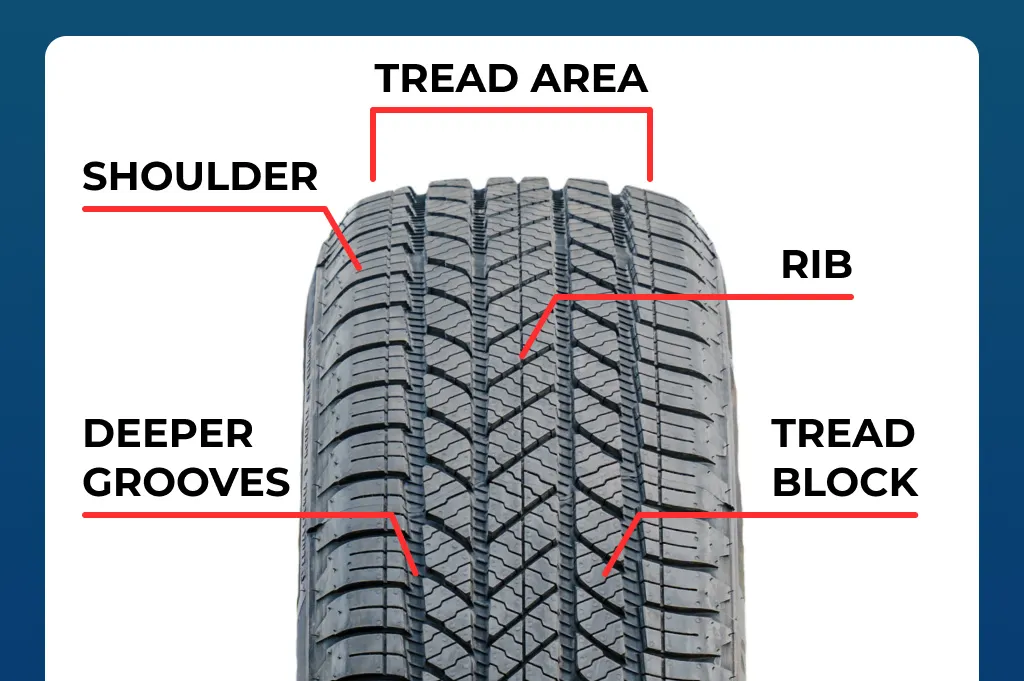
The basic description of tread depths is the vertical measurement between the top of the tire’s tread rubber down to the bottom of the tire’s deepest grooves. And these grooves are important for gripping the road, channeling away water, and helping your car handle safely.
So the measurement of your tire’s tread depth is crucial for a handful of reasons, not least of which is your safety. Tread depth affects how your car brakes, how it handles wet roads, and how likely you are to hydroplane — where your vehicle loses grip and slides uncontrollably on a wet surface.
Unfortunately, as tires wear out and tread depth decreases, so does this grip, leading to longer stopping distances, reduced cornering ability, and an increased risk of skidding on wet roads.
Tread-depth basic numbers
So when you’re looking at the depth of your treads, they are likely to range between 11/32” or 10/32″ and 2/32”. At one end of that spectrum, you have brand-new tires and at the other, you have tires that should be replaced immediately. But if you’re wondering ‘what’s a good tire tread depth’ then anything over 4/32″ usually counts as good. We’ll look at these numbers in more depth later on, but this will give you a good idea of the range of standard depths.
Ways to check your tire tread
Knowing the importance of tread depth is one thing; measuring it is another. Thankfully, you don’t need to be a mechanic to check the health of your tires. There are several methods, from using a specialized tread depth gauge to the good old penny test.
Penny test
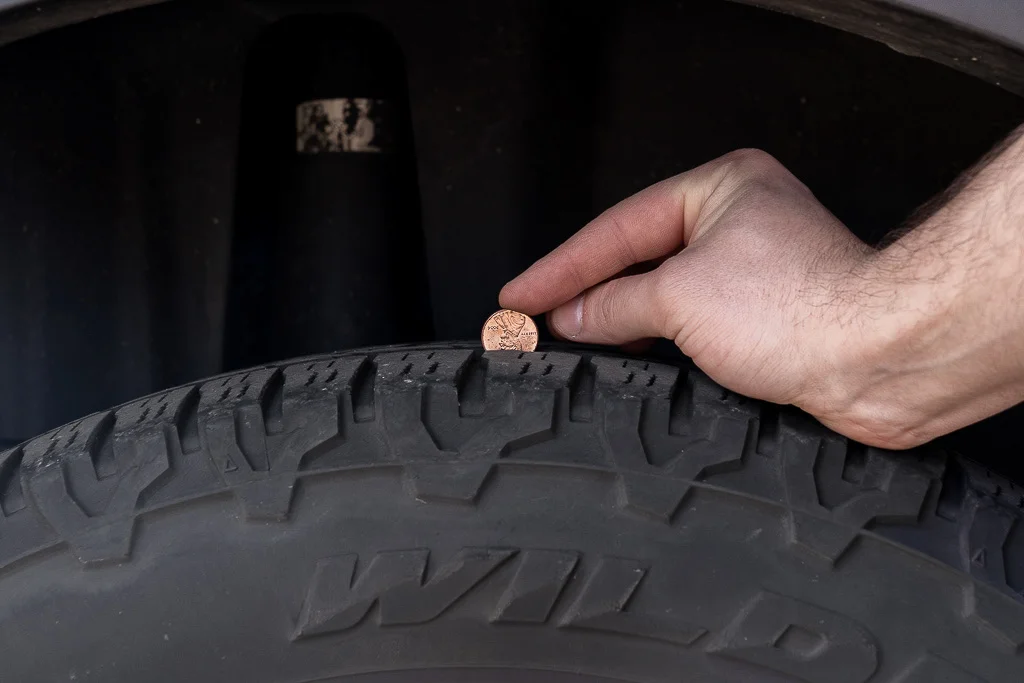
This is the most well-known way to measure a tire’s tread. All you need is a penny. Insert the penny into a tire groove with Lincoln’s head facing down. If any part of Abraham Lincoln’s head is hidden by the tread, the depth is more than 2/32″ and your tire is still road-legal. If Lincoln’s entire head is visible, you should replace your tire immediately.
Quarter test
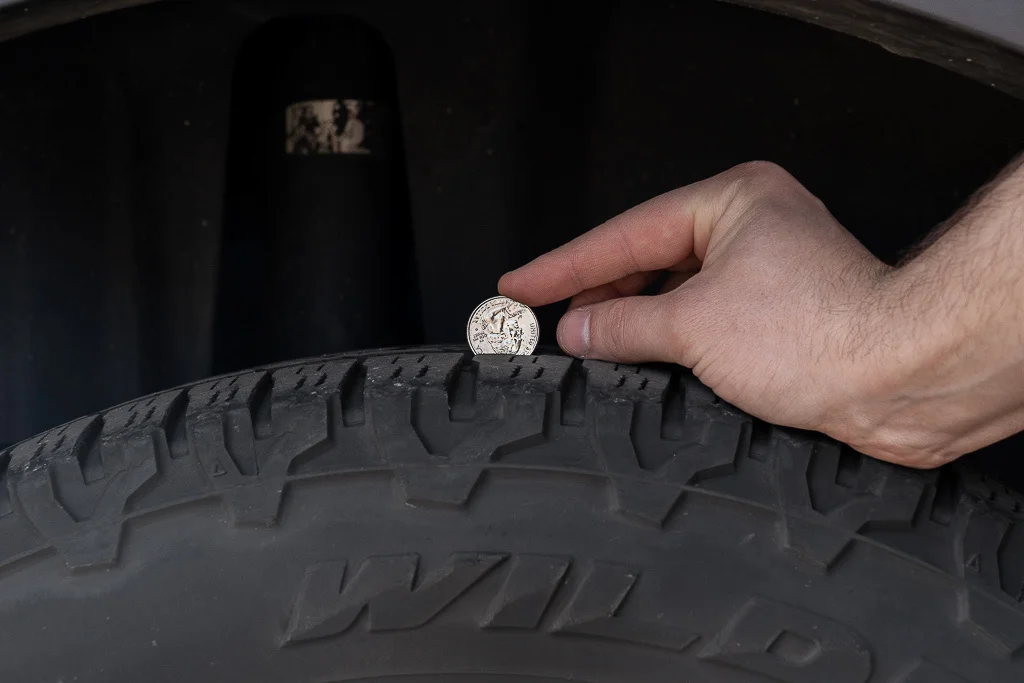
While the penny test is the most well-known method, the quarter test is another reliable way to check your tread depth. Insert a quarter into a tire groove with Washington’s head going in first. If the top of his head is covered by the tread, you have more than 4/32″ of tread depth remaining. This method is particularly useful for checking whether your tires are safe for wet or icy conditions.
Tread depth gauge
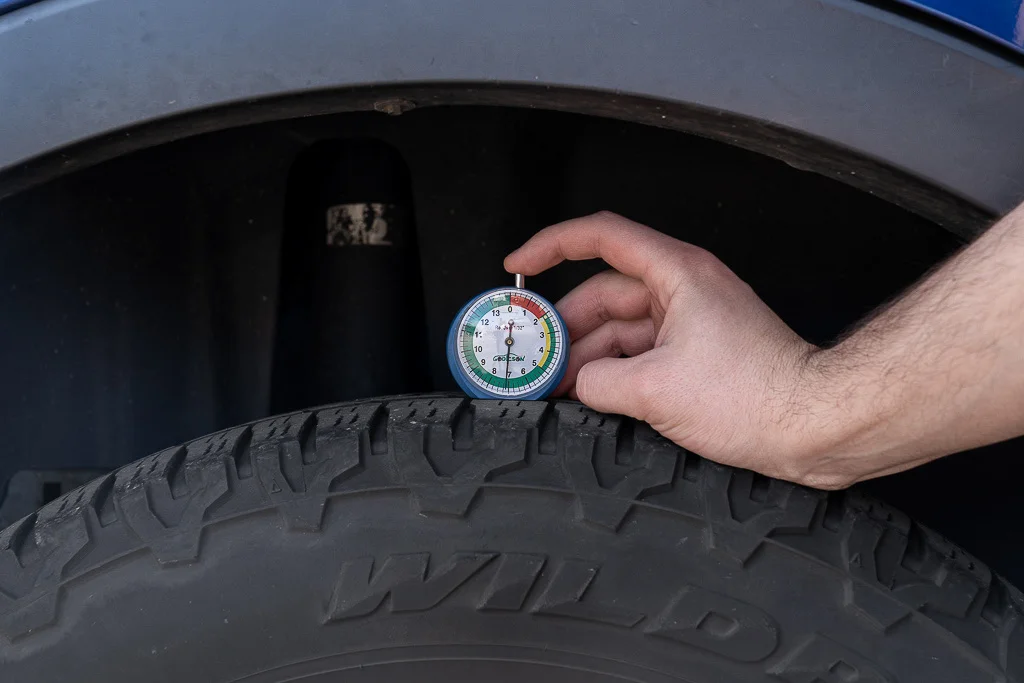
A tire tread depth gauge is a simple tool that can give you a precise measurement of your tire’s tread depth in 32nds of an inch or millimeters. To use it, simply insert the gauge’s pin into one of the tire’s grooves and press the shoulders of the gauge flat against the tread. The reading will tell you exactly how much tread depth you have left. You can buy a tire tread depth gauge for about $5 in most auto shops.
Treadwear indicator bars
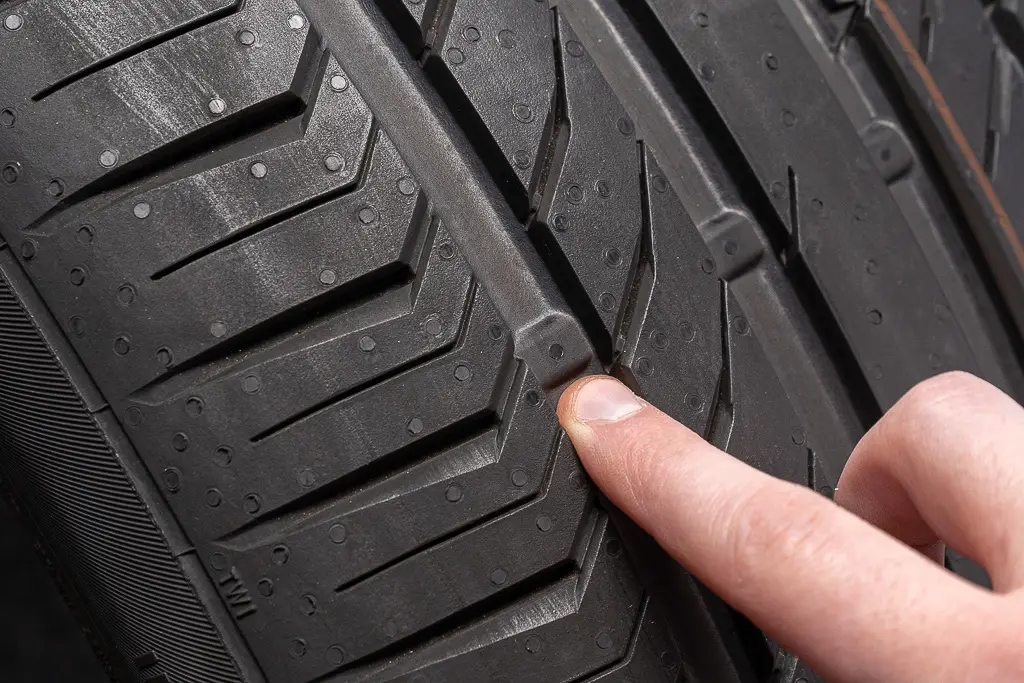
Most tires have treadwear bars (usually 6 of them) throughout the grooves. These indicate the minimum legal depth of 2/32”. There are also tire models that have several grades of bars, usually at 8/32”, 6/32”, 4/32”, and 2/32”. When a bar becomes visible, the tire is reaching a certain tread depth.
Checking treadwear is one of the first things to look for when buying used tires and it’s important to consider where to measure tire tread depth. Remember to measure tread depth on all tires, and also in different grooves. There may be some uneven treadwear, so one groove may have enough tread to drive safely, while another may be worn out.
What do tires’ tread depths mean
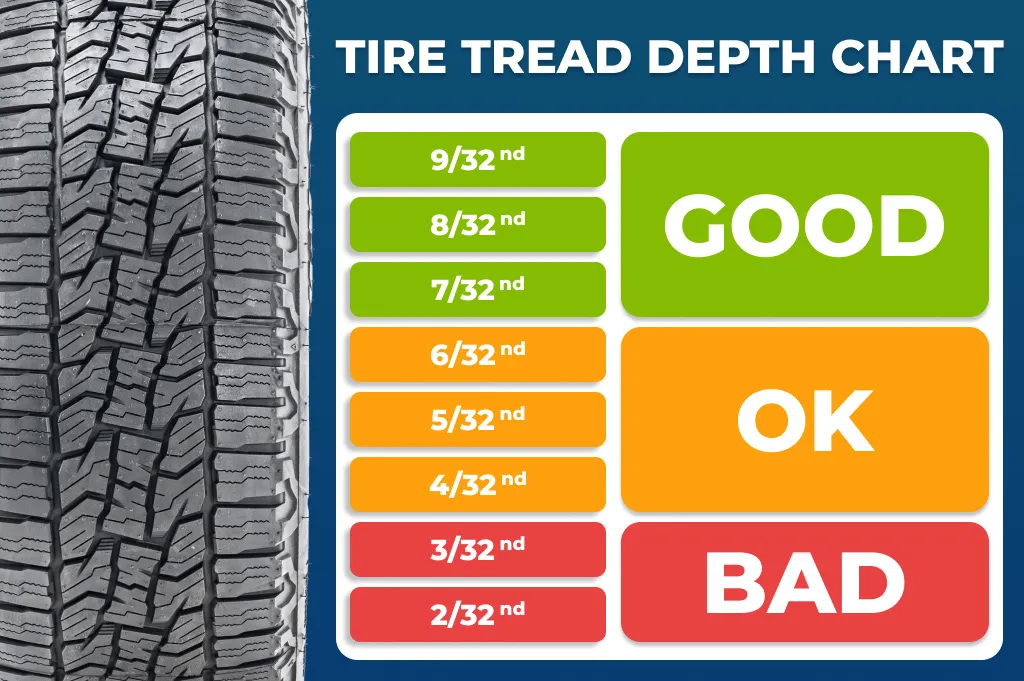
Whether you’re maintaining your current tires or buying a set of used tires it’s important to understand what different levels of tread wear mean:
- 10/32″ or 11/32″ is the standard original tread depth for new tires.
- 6/32” and up is sufficient and the minimum you should look for with used treads if you’re buying used tires.
- 5/32” is still sufficient in most cases, but tires may start to lose traction on wet roads.
- 4-3/32” is the level at which you should think about buying some new tires.
- 2/32” is the average legal minimum for tread depth; at this level, your tires are considered bald and unsafe.
It’s also important to remember that winter tires start to lose traction on icy and snowy surfaces at 6/32”. There may still be some traction until the tires wear down to 4/32”, but at that point, it’s vital to change your tires.
How UTQG can help you estimate used tires’ tread life
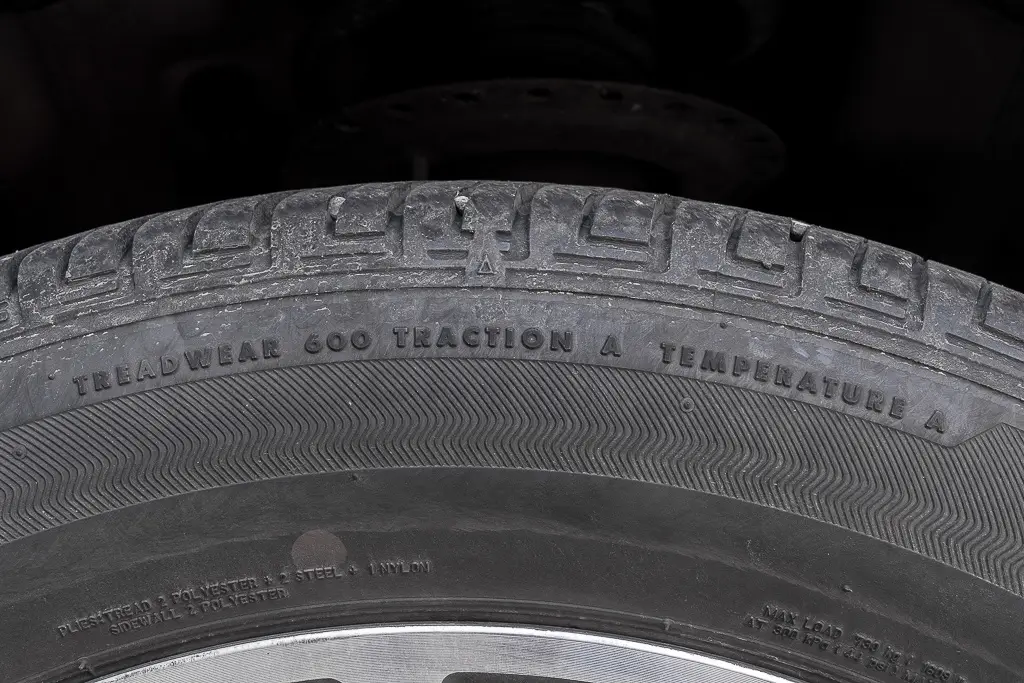
If you are buying used tires the Uniform Tire Quality Grading (UTQG) can be a helpful tool when looking at tread life. The UTQG tests are government-mandated and look at various aspects of tires’ performance including tread wear, temperature resistance, and traction.
The UTQG treadwear index is a 3-digit number, which compares a tire to the reference standard. The reference standard is 100, so if you buy a tire with a rating of 400 it should last four times longer than the reference standard.
For comparison racing tires are generally below 100 and a tire with a grade of 80 will wear 20% faster than the reference standard. Tires with 400-600 grades and higher are considered long-lasting.
If the used tires you are going to buy are of the same brand as your current set, a comparison is possible. You can also clearly see that a tire with a 600 grade will last longer than one with a 200 grade. The grade will also be helpful if you also know the treadwear warranty of the particular pre-mounted tire.
NOTE: The UTQG ratings are required for all tires except winter, light-truck, spare, and trailer tires, plus those with 12” and less in diameter.
How to extend tread life
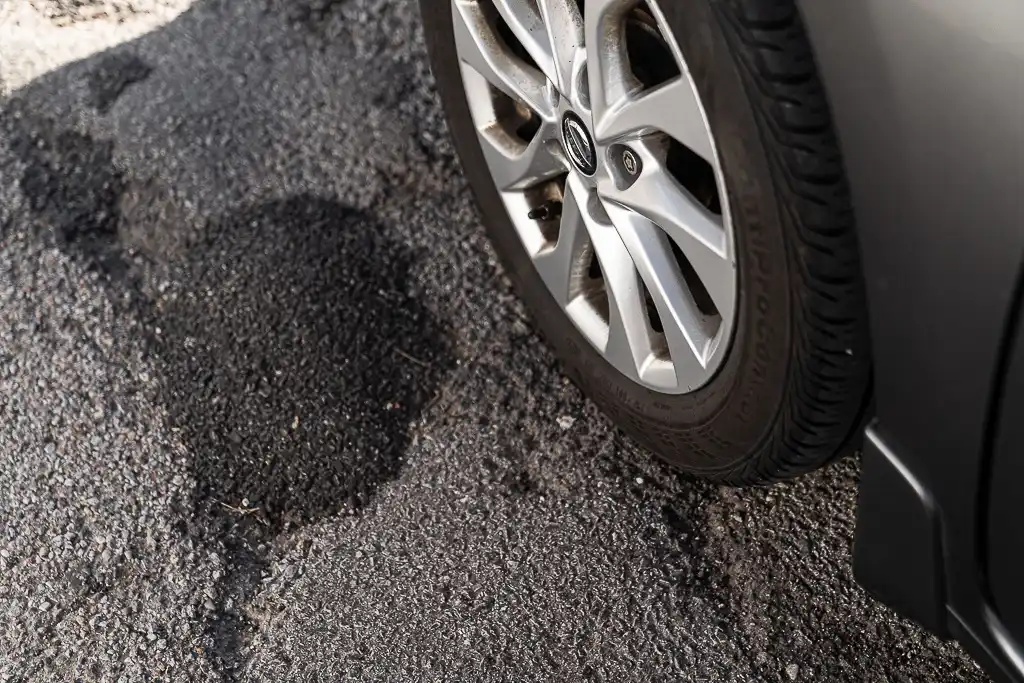
Tires are expensive and making sure their treads last a long time makes good economic sense. To help your tires last longer avoid sharp maneuvers and driving at high speeds, especially when your vehicle is heavily loaded. Tires work harder in these instances, so they wear out faster.
If possible, avoid these driving habits to prolong your tires’ tread life:
- Cornering
A high-wheel cut, especially performed at high speeds, wears treads faster. Even if you are turning into a parking space, it’s better to be gentle on turns. - High speeds on elevations
When driving you’ll encounter different elevations, but if you handle them at the same highway speed, more tread will wear off. Carrying heavy loads at high speeds when driving on elevations can make the situation even worse. - Hard start and braking
Accelerating and braking gradually will reduce the wear and tear on your treads. Also, if there is no urgent need, try not to break hard, or your tread life will decrease. - Not avoiding bumps
Bad road surfaces will make your tread wear faster, they can damage your tires, causing bulges and cracks.
Wise control over your driving style can save twice as much tread as a rough driver.
Risks of reduced tire treads
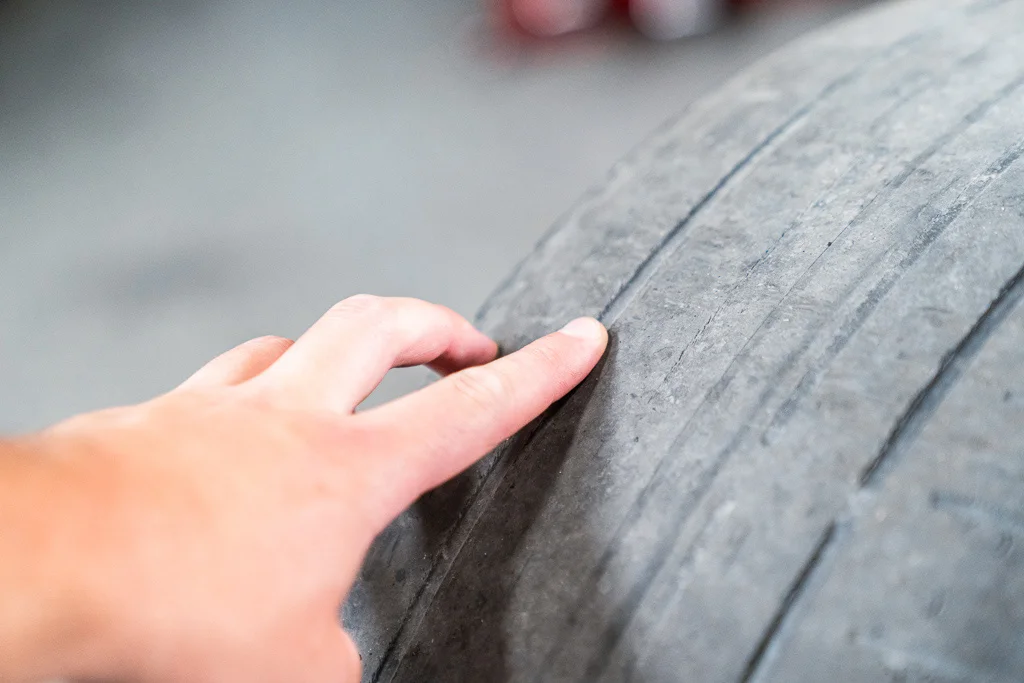
If your tires have 2/32″ then they are officially bald. Even before this their performance can be reduced, which is why many experts recommend replacing your tires when they drop to 4/32″. The reasons for this include:
- Less hydroplaning resistance
Tires are designed with ribs and grooves to clear water from wet surfaces, to keep traction. The more the used tires’ tread wears, the shallower its grooves get, and the less water is cleared. So tires begin to lose traction and the possibility of steering loss and hydroplaning increases. You may even experience this when the tread depth is 5-4/32”. - Snow and ice traction loss
Most all-season and winter tires are manufactured with smaller grooves or “sipes” helping them to grip winter roads. Sipes are designed to expand, providing strong traction between the road and the vehicle. As they wear out they lose their ability to hold the tire to the pavement in snowy and icy conditions. Sipes are usually shallower than the main grooves, so used winter tires tread may lose their performance at mid-wear (5-6/32”). - Air pressure loss
All tires lose air gradually, which is why you should check your tire pressure regularly. However, worn-out used tires’ treads are more likely to get damaged or punctured, which can lead to excess air loss, under-inflation, and eventually a flat tire. Under-inflation can cause uneven tread wear and reduce gas mileage. Flat tires can be dangerous causing accidents as well as impaired handling.
What to look for when buying used tires
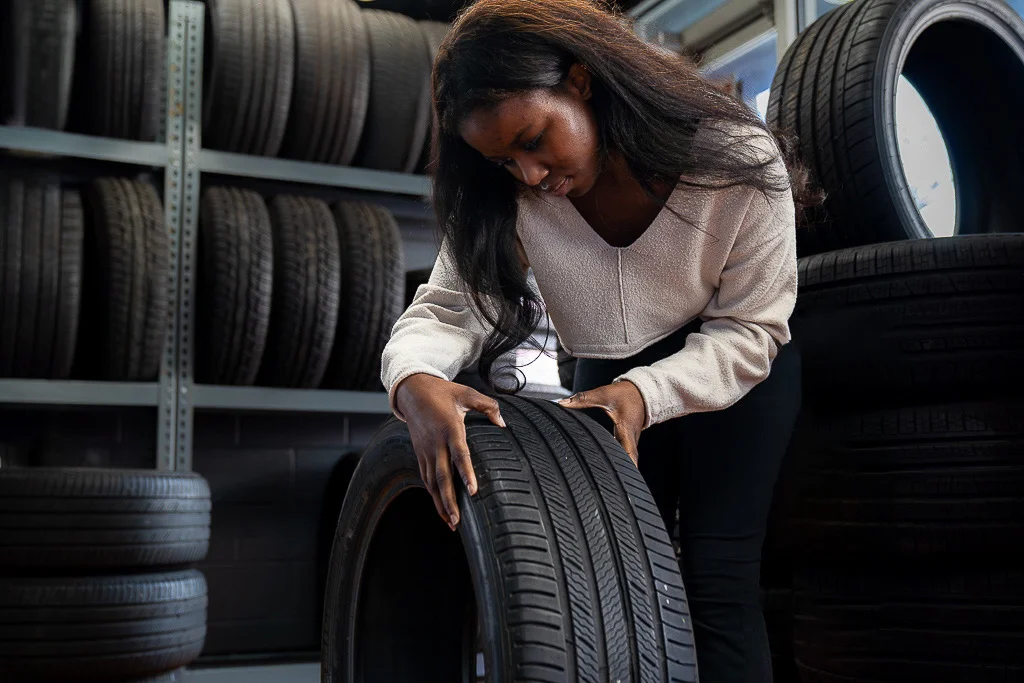
Used tires have many advantages, but it’s important to choose wisely when buying them. Remember that 5/32” is half of the tread for many tires, but not half of the tread life. And you should always change your tire before it reaches 2/32”. So all of a sudden, the half tread-life of a 10/32″ tire jumps to 6/32”. It’s also important to remember that tires designed for use in very wet or cold conditions may need to be replaced when they have a much deeper tread (4/32″ – 6/32″).
However there are many used tires available with well over 6/32″ of tread, and you can also find nearly-new tires with up to 10/32″, at a discounted price.
Frequently asked questions
What is good tire tread depth?
Many experts say that at least 4/32″ is a good depth for your treads. However, for better traction, especially in wet or snowy conditions, it’s recommended to have even more tread depth, ideally around 6/32″ or more. Maintaining good tread depth is essential if you want to drive safely and get the best performance out of your tires. So keep an eye on your tire health and replace them when necessary to ensure better grip, handling, and safety on the road.
What is minimum tire tread depth?
The bare minimum tread depth is 2/32″ and with this low tread depth you should definitely change your tires. Above 2/32″ might be considered okay, but it’s better to aim for at least 4/32″ for adequate traction and performance, and even more than that in wet or slippery conditions. Keeping your tires at an okay tread depth is important for handling, grip, and road safety, so it’s wise to monitor and replace tires as needed.
Should I replace tires at 5 32?
Depending on the type of tires you have and road conditions you drive in you might want to replace your tires at 5/32″. For winter tires, or if you drive in wet conditions this could be a good point to consider replacing your tires. For standard tires, it’s generally recommended to consider replacing them when they reach around 4/32″.
As tread depth wears down, your tires become less effective at gripping the road, especially in wet or slippery conditions, increasing the risk of accidents. Regularly monitoring your treads depth and considering factors like your driving habits and local weather conditions can help you make an informed decision about when to replace your tires.
How do I know my tire tread depth?
You can check your tire tread depth with a specialist gauge, using the treadwear indicator bars on your tires, or even with a penny or quarter. You can find a gauge at most auto parts stores for a few bucks. Alternatively, you can stick a penny or quarter into the tread grooves. With the penny tire test, if you can see all of Lincoln’s head you have less than 2/32″ and you should replace your tires right away. With a quarter, if you see all of Washington’s head you have 4/32″ or less and you might want to think about replacing your tires. Finally, you can look at the built-in wear bars to see how much tread you have left.
